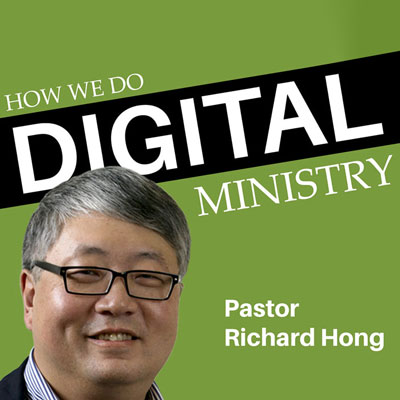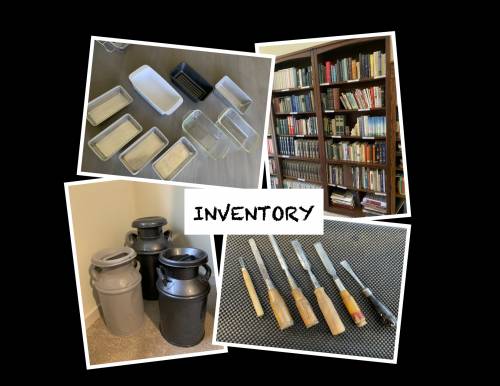November 30, 2021

Photo provided.
Giving Tuesday allows us to celebrate what makes us proud to be Presbyterian.
What does Presbyterian pride look like to you? For me, it looks like:
- Disaster response teams swooping into action following the latest natural disaster
- Church buildings opening their doors to house after-school programs and community dinners
- An offering plate overflowing with gifts as it’s passed from pew to pew.
What does Presbyterian pride sound like to you? For me, it sounds like:
- Over 4,000 young people performing energizers at Presbyterian Youth Triennium
- Calls to Capitol Hill to voice our desire for hope and justice for all God’s children
- Prayers for peace spoken during a worship service at the U.S.-Mexico border.
What does Presbyterian pride feel like to you? For me, it feels like:
- Hugs with friends we only see every couple of years at General Assembly
- Plucking food from the earth as we work to feed the hungry in our communities
- Aching feet after marching in the streets to end cash bail.
I am proud to be Presbyterian. It was a decision I made as a teenager back in 2006, and I’ve never looked back. I am grateful for the opportunity to now work at the Presbyterian Mission Agency where every day I am reminded what a faithful and generous denomination the Presbyterian Church (U.S.A.) is, and possibly more so, I am grateful for the opportunity to celebrate the work God is accomplishing through the PC(USA) on Giving Tuesday.
On the heels of the commercial events of Black Friday and Cyber Monday, a third post-Thanksgiving tradition has emerged that redirects our priorities – Giving Tuesday. Giving Tuesday, which is being observed today in more than 150 countries, exists for one purpose: to celebrate and encourage giving.
In collaboration with the ministry areas of the Presbyterian Mission Agency as well as the Office of the General Assembly, the Presbyterian Church (U.S.A.) will be hosting an eight-hour livestream this Giving Tuesday that will be sure to entertain, inform, and dare I say, make you proud to be Presbyterian. The event, which will be broadcast from four locations across the United States, will include worship, conversations with congregation and mid council leaders, ministry areas and partners around topics such as poverty, racial justice, and creativity in worship, and some lighthearted fun with familiar faces.
During the virtual event, we will be provided the opportunity to express our gratitude to God for all God has done for us and the household of faith. Through our gifts, the PC(USA) can continue to be a healing presence to a world in need, being a church of action and reaching out to our siblings who are most marginalized. Gifts made on Giving Tuesday will support Shared Mission (unrestricted giving), Per Capita, and the Special Offerings, lifting up the work of the entire Presbyterian Church (U.S.A.).
Today on Giving Tuesday, as we are inspired to respond to God’s generosity, I invite you to reflect on what makes you proud to be Presbyterian (and I’d love to hear about it!). Then, let us join together with Presbyterians from near and far as we profess by our actions and with our gifts — that we are the Church, together!
Lauren Rogers, Project Manager for Digital Fundraising for Special Offerings and the Presbyterian Giving Catalog
Let us join in prayer for:
PC(USA) Agencies’ Staff
David Dobson, President & Publisher, Presbyterian Publishing Corporation
Simon Doong, Mission Specialist, Presbyterian Peacemaking Program, Presbyterian Mission Agency
Let us pray
To make my offering to you, God,
Is to bring back to memory
That you are the source of all gifts, and
The one from whom all blessings flow.
When we join our gifts with the gifts of others, we are reminded that we cannot go it alone.
We are in the company of the household of faith and the whole host of witnesses who went before.
Each gift I make is a “thank you” for the community of faith where I can share my griefs and burdens, my joys and excitement.
Each gift is a “thank you,” God, for the gift of life.
Each gift is an act of hope in God’s future for all Creation.
Each gift is a sign of our thanks and gratitude.
May it always be so.
Amen.
Prayer by the Rev. Rosemary Mitchell, Senior Director for Mission Engagement and Support Project Manager for Digital Fundraising for Special Offerings and the Presbyterian Giving Catalog

 As many churches navigate the both/and world of hybrid ministry, where in-person and online worship coexist, there’s a word to keep in mind: “phygital.” I didn’t invent it. It was coined in 2013 to describe creating a seamless experience that is the best of both the digital and physical realms. And there lies the goal — and the challenge — for our churches, that of creating hybrid worship where two intrinsically different environments come together seamlessly.
As many churches navigate the both/and world of hybrid ministry, where in-person and online worship coexist, there’s a word to keep in mind: “phygital.” I didn’t invent it. It was coined in 2013 to describe creating a seamless experience that is the best of both the digital and physical realms. And there lies the goal — and the challenge — for our churches, that of creating hybrid worship where two intrinsically different environments come together seamlessly. If you ask a Presbyterian to define “peace,” you’ll get lots of answers, and they’re mostly all correct. Peace is tranquility and calm and quiet and respect and all those things that we ask of our children, at least for a few blessed moments every now and then. Peace is well-being, wholeness, health, safety, security, civility and all those things we expect from our communities. Peace is diplomatic treaties, international accords, global conventions, mutual aid, disaster relief and all those things that create understanding among nations. Peace finds its expression in many ways, takes on a variety of forms and is evident in both the most intimate and expansive parts of life. And as people of faith, we believe peace — in all its expressions and forms — is a gift from God.
If you ask a Presbyterian to define “peace,” you’ll get lots of answers, and they’re mostly all correct. Peace is tranquility and calm and quiet and respect and all those things that we ask of our children, at least for a few blessed moments every now and then. Peace is well-being, wholeness, health, safety, security, civility and all those things we expect from our communities. Peace is diplomatic treaties, international accords, global conventions, mutual aid, disaster relief and all those things that create understanding among nations. Peace finds its expression in many ways, takes on a variety of forms and is evident in both the most intimate and expansive parts of life. And as people of faith, we believe peace — in all its expressions and forms — is a gift from God.
 Give thanks with a grateful heart, give thanks to the Holy One …
Give thanks with a grateful heart, give thanks to the Holy One …

 What would it cost to buy it all back?
What would it cost to buy it all back?
